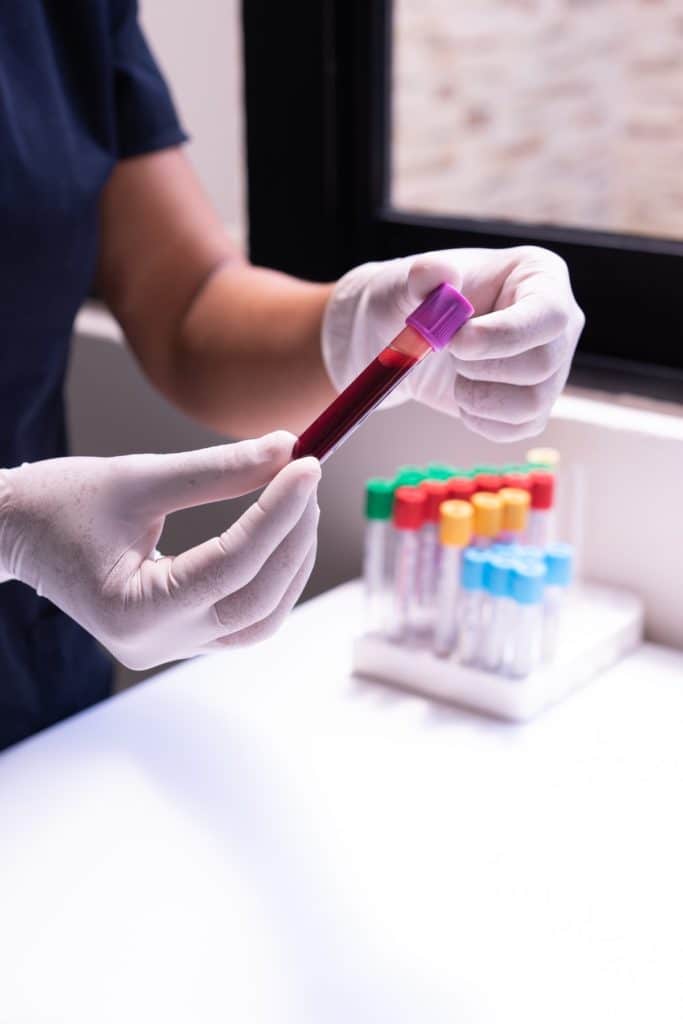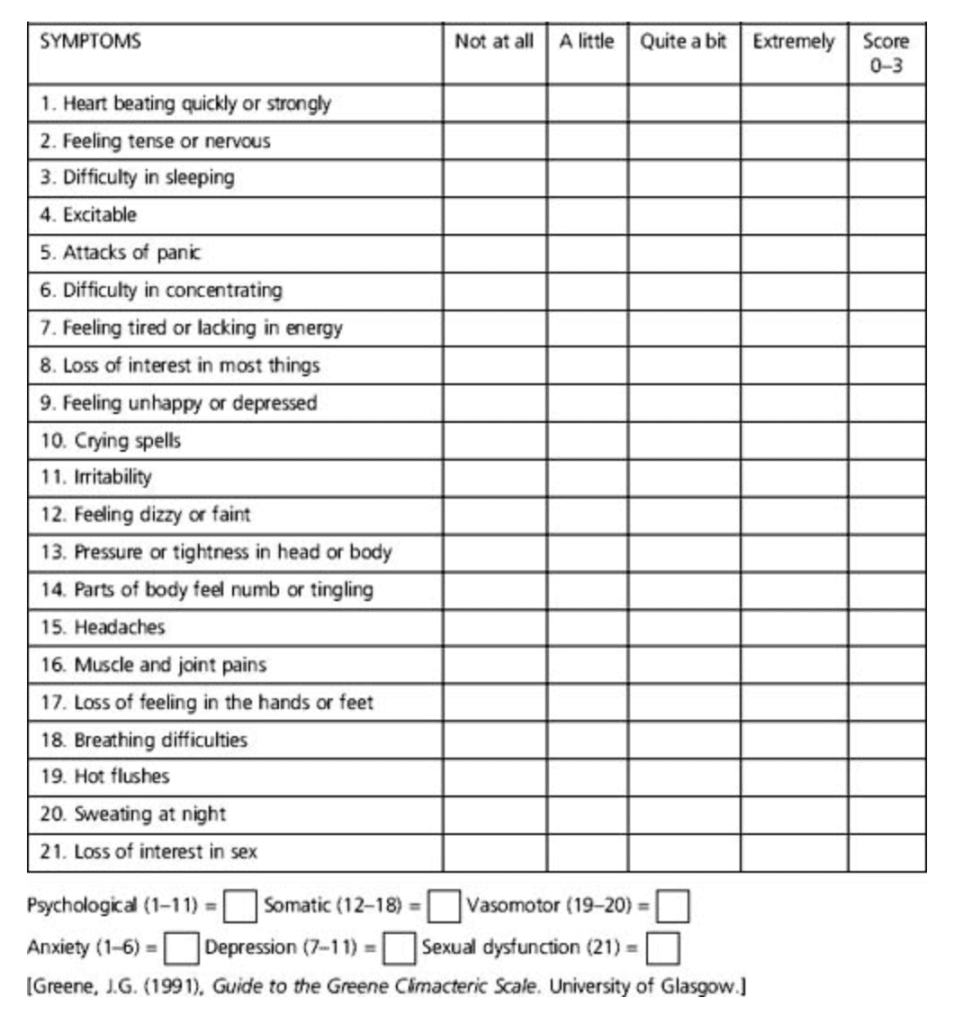So many women ask us “how is perimenopause diagnosed?” And “is there a [reliable] test for perimenopause?”
Because after all, how are you supposed to know if you’re in perimenopause? Or if you’re even menopausal? And what about post-menopausal?
While it’s a very good question, the answer is there is no reliable test for perimenopause.
Why isn’t there a reliable test for perimenopause?
It seems crazy, doesn’t it? We live in the 21st century so surely there should be a simple test to tell us we’ve reached perimenopause.

But the truth is, blood tests are considered unreliable as hormone levels change so much. Although, the caveat is that they are sometimes used to check specific levels for fertility issues or when periods stop at an early age1. And in some cases, blood tests are helpful to rule out other conditions similar to perimenopause such as autoimmune or thyroid conditions.
In addition, saliva testing is not recommended by menopause societies as they feel it is expensive and inaccurate1.
What about follicle-stimulating hormone (FSH) testing?
According to the North American Menopause Society (NAMS), elevated follicle-stimulating hormone (FSH) levels are sometimes measured to confirm menopause. They stipulate that when a woman’s FSH blood level is consistently elevated to 30 mIU/mL or higher, and she has not had a menstrual period for a year, it is generally accepted that she has reached menopause1.
However, NAMS also points out that a single FSH level test can be misleading in perimenopause. This is because estrogen tends to go through highs and lows from day to day. So it may be low on one test and high on another.
In fact, the fluctuations are one reason for some symptoms. Therefore, one FSH level test cannot confirm perimenopause or menopause.
As a result, signs, and symptoms can also fluctuate. Furthermore – and this is important – NAMS say that ‘if a woman is using certain hormone therapies (such as birth control pills), an FSH test is not valid. What’s more, for the same reasons, over-the-counter urine tests are not reliable.
For these reasons, menopause specialists suggest considering other options.

The most reliable test for perimenopause
Perimenopause is the lead-up to menopause when symptoms begin. You are in perimenopause until 12 months after your last period (which you will only know retrospectively)4. At this point, you are considered post-menopausal.
Symptom checker
The Australasian Menopause Society recommends using the Greene scale which is a symptom management system1.
Quiz – Are You In Peri- Or Post-?
Measuring the following in women aged over 45 years is not recommended:1,2
- FSH (follicle-stimulating hormone)
- LH (luteinising hormone)
- AMH (anti-Müllerian hormone)
- Estradiol or testosterone
- Inhibin A or B (which inhibit FSH production) levels
- Antral follicle count
- Ovarian volume in a woman with symptoms at the normal age for menopause (over 45 years)
Ask for an FSH test if2:
- You are 40 to 45 years with menopausal symptoms, including a change in your menstrual flow
- If you are under 40 and you’re concerned about menopause
Read: Symptoms Of Early Menopause
The most reliable test for post-menopause

Post-menopause begins 12 months after your last period, however, as we have already noted you only know this in hindsight. And if you’re still having symptoms, there’s no way of knowing how long they will continue1. The Australian Menopause Society suggests they usually resolve within 2-5 years. Although 10 to 20% of women will experience symptoms for over a decade. Furthermore, ‘vaginal dryness and urinary frequency may begin during perimenopause and not resolve naturally with time’.
What if I bleed after 12 months?
We’ve heard of this happening 18 months or even two years after your last period. According to MenoDoc, Dr Linda Dear, it’s important to check in with your doctor if this occurs.
If it’s not menopause, then what is it?
Indeed, the signs of thyroid disease can often be similar to symptoms of peri/menopause. And according to the Australasian Menopause Society, depression and anaemia are also common conditions that may occur at the same time.
Read: 12 Common Signs Of Depression & Anxiety At Menopause
What’s more unstable diabetes, hyperthyroidism, and SSRI antidepressant medications may also cause hot flushes1.
Read: How Will Post-Menopause Change My Life?
Conclusion
Perimenopause can be confusing because there isn’t a simple, reliable test available currently. So it can be overwhelming as we try to come to grips with what we’re experiencing if we’re one of the 80% of symptomatic symptoms.
Further, one in four of us will experience quite severe symptoms.
The most common predictors of perimenopause include being in your 40s, noticing a change in your periods, and perhaps moods and hot flushes. However, there are many other signs and symptoms and these can sometimes occur earlier and sometimes later. Read the 34 Signs & Symptoms Of Perimenopause but know that as light is shining on menopause more are being uncovered.
Every. Body. Is. Different.
UPDATE: Exciting new research by neuroscientist, published in June 2024 has found that measuring the brain can 100% determine a woman’s menopausal status. It’s early days but this may change our ability to test for perimenopause in the future.

The Australasian Menopause Society state:
“In most cases, recording a symptom score helps to make the diagnosis, at the same time educates the woman and is a basis for assessing efficacy of treatment. Checking FSH or AMH levels or serum estradiol and progesterone are unnecessary tests in diagnosing menopause for most women. Checking an androgen profile as a routine on all perimenopausal women is also unnecessary and costly.
The blood tests of FSH/estradiol can fluctuate daily and therefore are not useful or necessary. It is especially unhelpful to do hormone blood tests while women are on hormone therapy including the contraceptive pill – symptoms, not blood levels, guide therapy.”
With that said, entering into perimenopause can be a great time to see your doctor for a complete physical and health check.
Read:
Can I Treat My Symptoms Naturally?
Disclaimer: Our articles are a guideline only. For this reason, this should not take the place of medical advice.
Share with a friend
Sign up to our mailing list for the latest news and stories and receive a $5 discount code to redeem on your first purchase, plus receive a 3-step eBook on ways to support your body through menopause.
This site is protected by reCAPTCHA and the Google Privacy Policy and Terms of Service apply.
Related Articles
References:
- The North American Menopause Society, How Do I Know When I’m In Menopause
- Menopause: diagnosis and management. London: National Institute for Health and Care Excellence (NICE); 2019 Dec. (NICE Guideline, No. 23.)Available from: https://www.ncbi.nlm.nih.gov/books/NBK552590/
- Australasian Menopause Society. Diagnosing Menopause.
- McKinlay SM et al. The normal menopause transition. Maturitas 1992;14:103.












